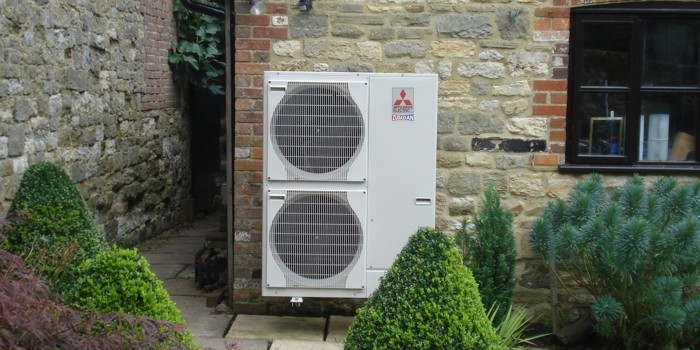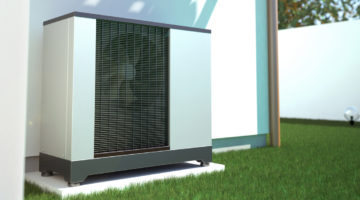
When it comes to researching heat pumps, you will come across two terms constantly that you need to understand – Coefficient of Performance (often abbreviated to CoP) and Seasonal Performance Factor (abbreviated to SPF).
Understanding what these terms mean is absolutely key, since they reveal the efficiency of a heat pump. Obviously the more efficient the heat pump the better, since running costs will be lower, but also these values will have a direct impact on the amount you will receive via the renewable heat incentive!
The Coefficient of Performance of Heat Pumps
The Coefficient of Performance is a simple ratio of the heating provided by a heat pump to the electricity consumed.
In a heat pump, electricity is used to move heat from a cold reservoir to a hot reservoir in a very efficient way. How efficient? Where an electric heater converts 1kW of electricity into 1kW of heat, a heat pump converts that 1kW of electricity into 3 or 4 kW of heat.
It is easy to think that this is defying the laws of thermodynamics, but of course the heat from the pump is not being generated, it is simply being shipped from outside the property into the inside. The warmer the external heat source, the better, since there is less electricity required to get it up to a nice temperature.
The Coefficient of Performance therefore varies throughout the year – in the winter months, an air source heat pump will require more electricity to get the heat up to a comfortable temperature so the CoP will be relatively low (perhaps 2.5). In the summer the opposite is true; since the external temperature of the air is warm already, the heat pump doesn’t require much electricity to get the heat pump up to a nice temperature, so the CoP might be as high as 4 or more.
Now consider a Ground Source heat pump, this takes advantage of heat in the ground and uses a series of buried pipes to absorb the heat. Since the ground temperature has very little variation over the year, the CoP will likewise be relatively consistent.
Hopefully you can spot a problem with using CoP as the sole measure of heat pump efficiency – since there is massive seasonal variation we need a means of getting an average efficiency of the heat pump over a year, to be able to compare different heat pumps.
The Seasonal Performance Factor of Heat Pumps
As we have said, the temperature of the ground or air being used by the heat pump plays a key role in the system’s efficiency. The seasonal performance factor takes into account how well the pump works at both low and high temperatures, and is a far better reflector of how efficient your pump will be than the CoP.
It allows you to make calculations between different ground, air and even water source heat pumps, which is pretty fundamental since the variation in costs between the different units. For example we quote a guide price of £25,000 for a ground source heat pump, while an air source heat pump is far cheaper at just under £10,000. The SPF of a ground source heat pump could be as high as 4 over the year, while the SPF of an ASHP may be only just over the 2.5 mark. Depending on energy usage, this means that relatively quickly, opting for a GSHP could be a better decision based on energy savings.
Likewise, if you look at the calculation for the Renewable Heat Incentive – it takes into account the SPF, rewarding a heat pump that is more efficient through higher payments. You can see how to calculate the RHI here.
Good CoP, Bad CoP
As we have seen, the performance of a heat pump can vary wildly depending on a number of factors, but generally speaking ground source heat pumps can regularly be found on the market with a COP greater than 4. Air source heat pumps tend to be less efficient, and a COP over 3 is considered good. Comparing different air source heat pumps, it is worth bearing in mind that a heat pump with a higher CoP / SPF will cost more, and the same is true when comparing ground source heat pumps with one another.












Good Cop, Bad Cop – quite possibly the worst pun in history, but one that I shall certainly he using in the future!
Thanks for sharing a very useful summary
Very useful indeed
Which manufacturers (if any) will give a month-by-month COP – I only want winter figures so SCOP useless – it’ll be off in the summer!